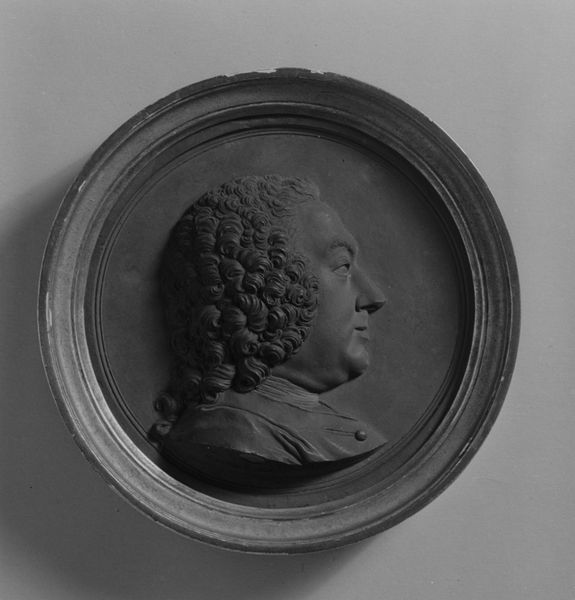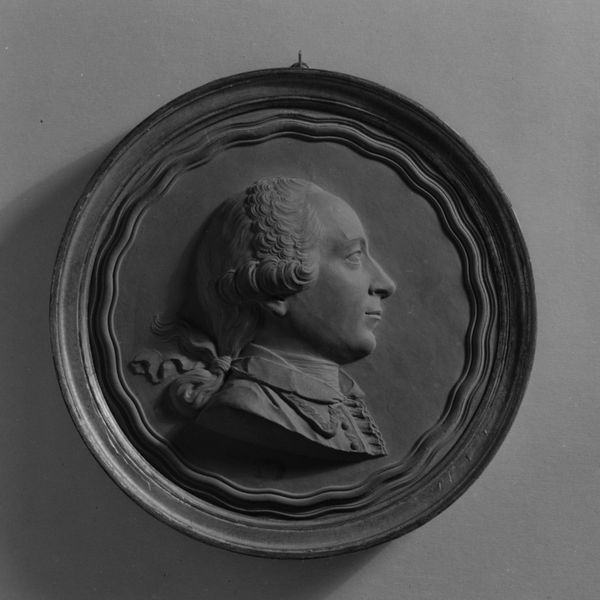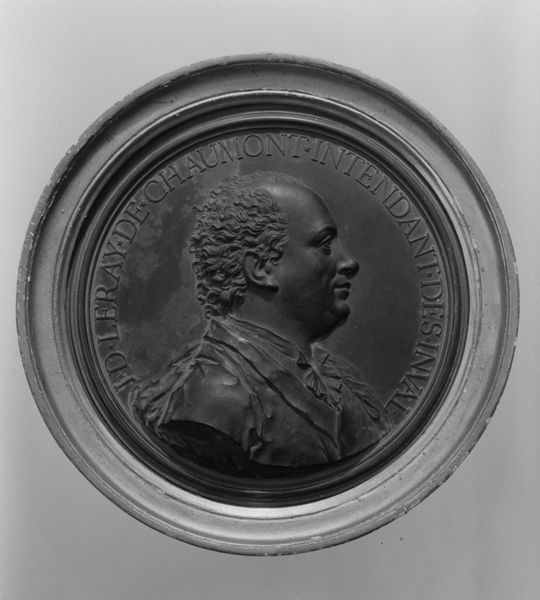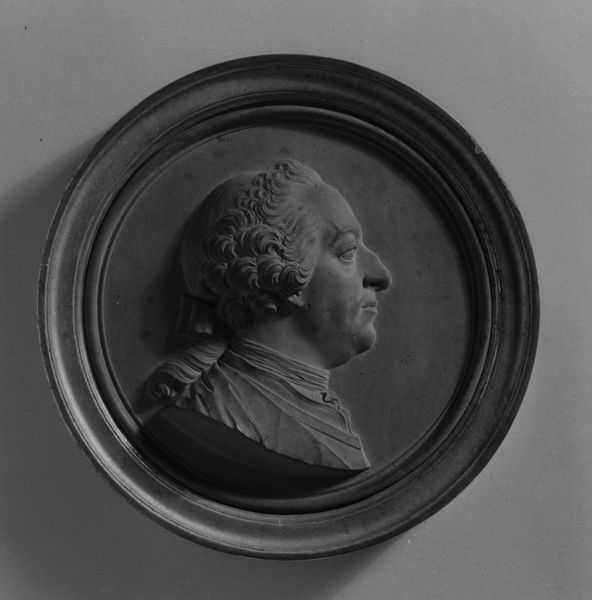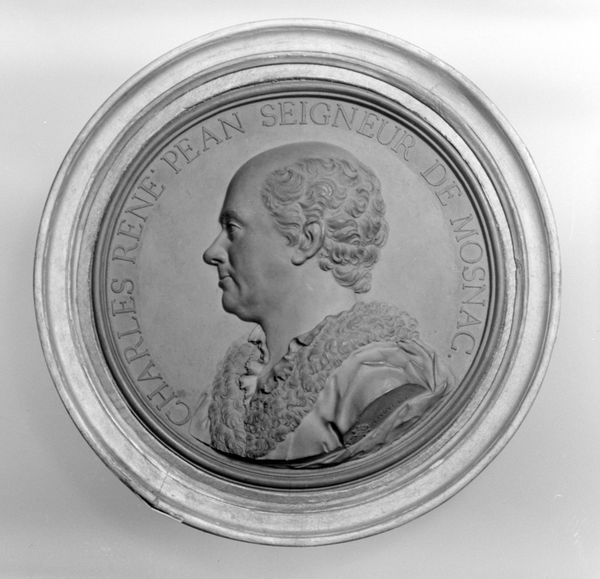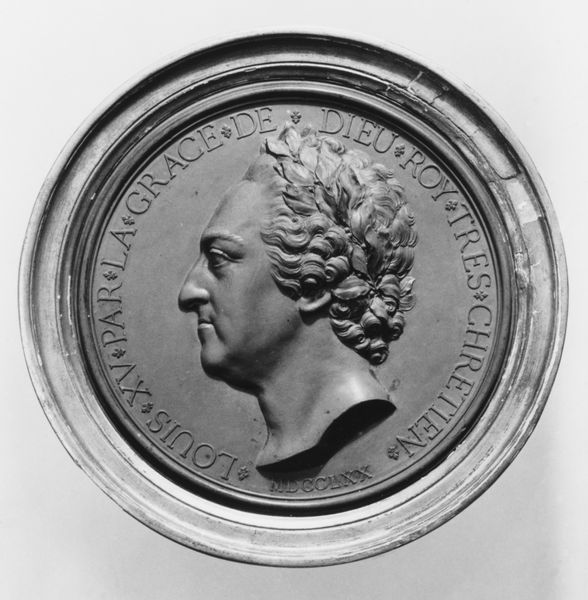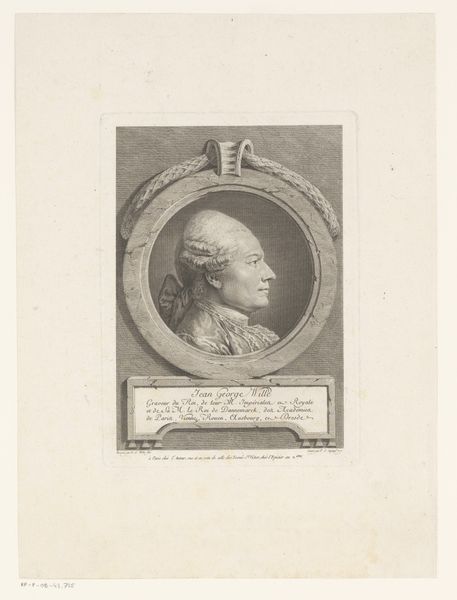
sculpture
#
portrait
#
sculpture
#
sculpture
#
decorative-art
Dimensions: Diameter (without frame): 6 5/8 in. (16.8 cm)
Copyright: Public Domain
Editor: This portrait medallion, "Hugues-Joseph Gamot, Engraver to the King" created by Jean-Baptiste Nini in 1766, is surprisingly detailed, especially given its relatively small size. It almost feels like I'm looking at a coin depicting an important historical figure. What layers of meaning are embedded in this piece? Curator: Indeed. Notice the profile view, a format heavily laden with historical weight. Consider Roman coinage, where emperors were immortalized in profile. This choice links Gamot, a craftsman, to that lineage of power and lasting legacy. Do you see the inscription circling the portrait? Editor: Yes, "Hugues-Joseph Gamot, Engraver to the King". So it serves almost like a title and also commemorates his royal appointment. Curator: Precisely. The inscription sanctifies not just Gamot's name, but his profession. "Engraver to the King" – it's not merely descriptive, it's aspirational. What does royal service say to you? Editor: Well, it implies a certain level of skill, and also the honor of serving the monarchy. Curator: Precisely, skill combined with the authority. Moreover, it solidified and signaled his contribution to the continuity of royal narrative. These objects circulated; reinforcing values, hierarchies and royal power structures, visually embedding cultural memory within people’s understanding of the world. Editor: That makes me think differently about these medallions as more than just decorations! I’m now curious how similar art objects from different time periods may share visual codes and reinforce similar social ideas. Curator: An excellent observation. Symbols, even in seemingly simple portraits, are potent conveyors of enduring cultural meaning. This medallion connects us to historical understanding of artistry, power and immortality.
Comments
No comments
Be the first to comment and join the conversation on the ultimate creative platform.

